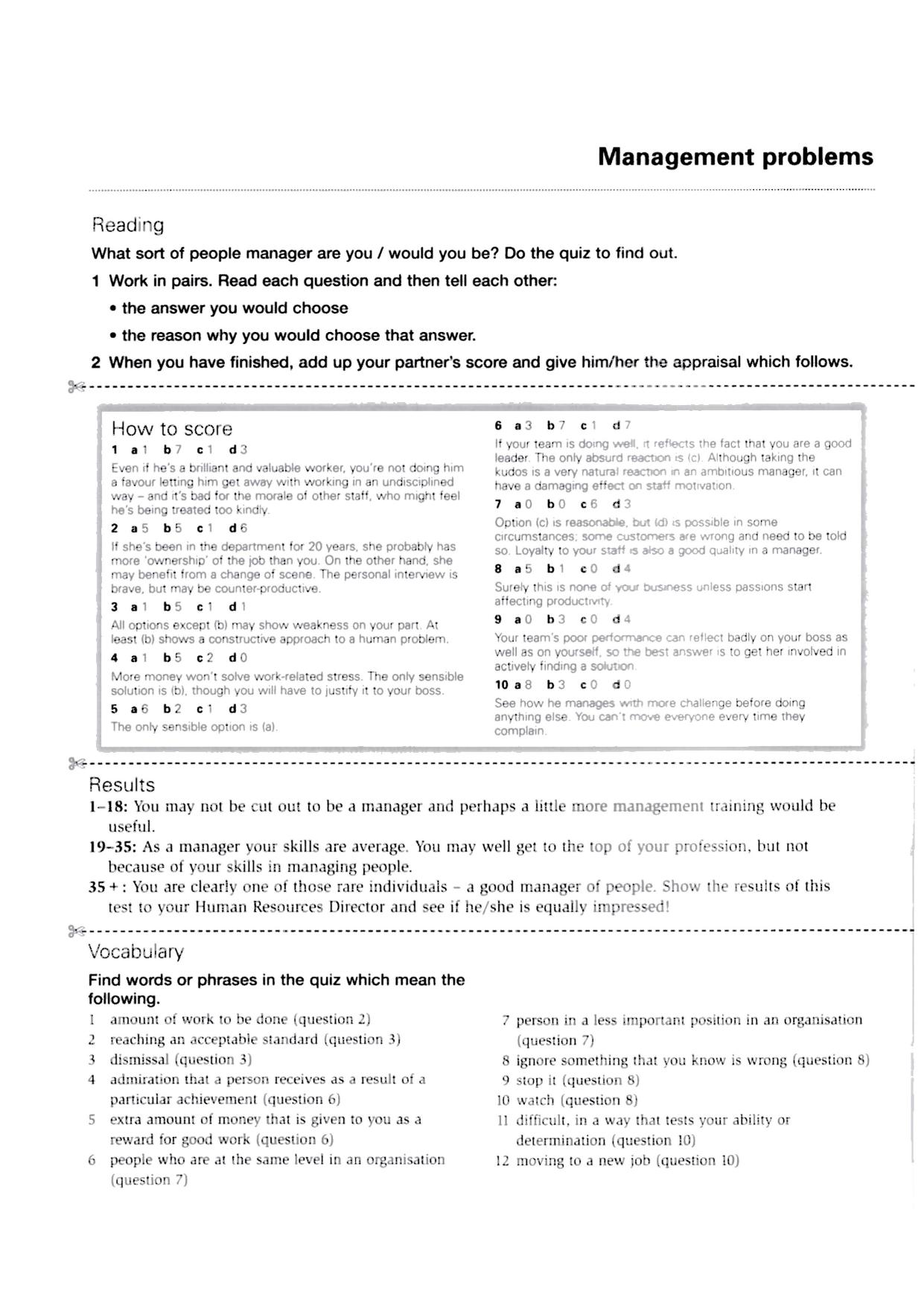Management by Unknown

Author:Unknown
Language: eng
Format: epub, pdf
358 Part 4 Organizing
Size and Structure
There’s considerable evidence that an organization’s size affects
its structure.33 Large organizations—typically considered to
be those with more than 2,000 employees—tend to have more
specialization, departmentalization, centralization, and rules
and regulations than do small organizations. However, once
an organization grows past a certain size, size has less influ-
ence on structure. Why? Essentially, once there are around
2,000 employees, it’s already fairly mechanistic. Adding another
500 employees won’t impact the structure much. On the other
hand, adding 500 employees to an organization with only
300 employees is likely to make it more mechanistic.
Technology and Structure
3M Company’s organic structure helps it to
adapt quickly to dynamic environmental forces
Every organization uses some form of technology to convert its inputs into outputs.
of global competition and product innovation.
For instance, CloudDDM uses 3D printers to make prototypes and product parts for
With a flexible structure, 3M can satisfy
corporate customers. This technology has made it possible to conduct the work with few
customers’ fast-growing demand for touch-
workers. According to Mitch Free, CloudDDM’s founder, “we’ll have 100 high-tech 3D
screen products such as Ideum’s new coffee
table PC shown here that incorporates 3M’s
printers running 24 hours, 7 days a week. And it’ll need just three employees: one for
multitouch technology, an application that is
each of the eight-hour shifts.”34 Employees at FedEx Office produce custom design and
key to expanding the reach of 3M’s interactive
print jobs for individual customers. And employees at Bayer’s facility in Karachi, Paki-
systems and displays.
stan, are involved in producing pharmaceuticals on a continuous-flow production line.
Source: Ideum/REX/AP Images
The initial research on technology’s effect on structure can be traced to Joan
Woodward, who studied small manufacturing firms in southern England to determine
the extent to which structural design elements were related to organizational success.35
She couldn’t find any consistent pattern until she divided the firms into three distinct
technologies that had increasing levels of complexity and sophistication. The first cat-
unit production
egory, unit production, described the production of items in units or small batches.
The production of items in units or small
The second category, mass production, described large-batch manufacturing.
batches
Finally, the third and most technically complex group, process production, included
mass production
continuous-process production. A summary of her findings is shown in Exhibit 11-7.
The production of items in large batches
Other studies also have shown that organizations adapt their structures to their
process production
technology depending on how routine their technology is for transforming inputs into
The production of items in continuous
outputs.36 In general, the more routine the technology, the more mechanistic the struc-
processes
ture can be, and organizations with more nonroutine technology are more likely to
have organic structures.37
Environmental Uncertainty and Structure
Some organizations face stable and simple environments with little uncertainty; oth-
ers face dynamic and complex environments with a lot of uncertainty. Managers try
to minimize environmental uncertainty by adjusting the organization’s structure.38 In
stable and simple environments, mechanistic designs can be more effective. On the
other hand, the greater the uncertainty, the more an organization needs the flexibility
Exhibit 11-7
Unit Production
Mass Production
Process Production
Woodward’s Findings on
Structural
Low vertical
Moderate vertical
High vertical
Technology and Structure
characteristics:
differentiation
differentiation
differentiation
Low horizontal
High horizontal
Low horizontal
differentiation
differentiation
differentiation
Low formalization
High formalization
Low formalization
Most effective
Organic
Mechanistic
Organic
structure:
M11_ROBB7604_14_SE_CH11_pp346-pp377.indd 358
03/10/16 5:37 PM
Download
This site does not store any files on its server. We only index and link to content provided by other sites. Please contact the content providers to delete copyright contents if any and email us, we'll remove relevant links or contents immediately.
Hit Refresh by Satya Nadella(9038)
The Compound Effect by Darren Hardy(8808)
Change Your Questions, Change Your Life by Marilee Adams(7635)
Nudge - Improving Decisions about Health, Wealth, and Happiness by Thaler Sunstein(7615)
The Black Swan by Nassim Nicholas Taleb(7010)
Deep Work by Cal Newport(6880)
Daring Greatly by Brene Brown(6446)
Rich Dad Poor Dad by Robert T. Kiyosaki(6403)
Principles: Life and Work by Ray Dalio(6213)
Playing to Win_ How Strategy Really Works by A.G. Lafley & Roger L. Martin(5922)
Man-made Catastrophes and Risk Information Concealment by Dmitry Chernov & Didier Sornette(5921)
Digital Minimalism by Cal Newport;(5664)
Big Magic: Creative Living Beyond Fear by Elizabeth Gilbert(5613)
The Myth of the Strong Leader by Archie Brown(5425)
The Slight Edge by Jeff Olson(5346)
Discipline Equals Freedom by Jocko Willink(5285)
The Motivation Myth by Jeff Haden(5156)
Stone's Rules by Roger Stone(5026)
The Laws of Human Nature by Robert Greene(4999)
